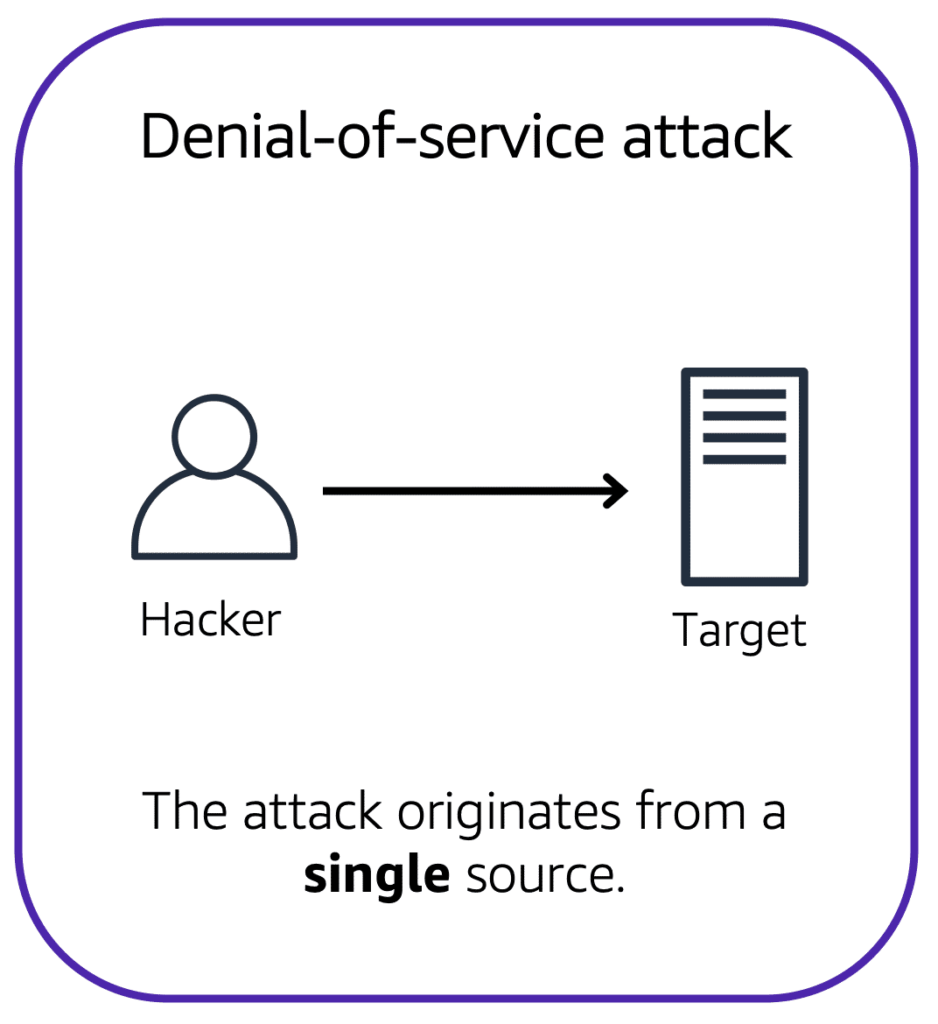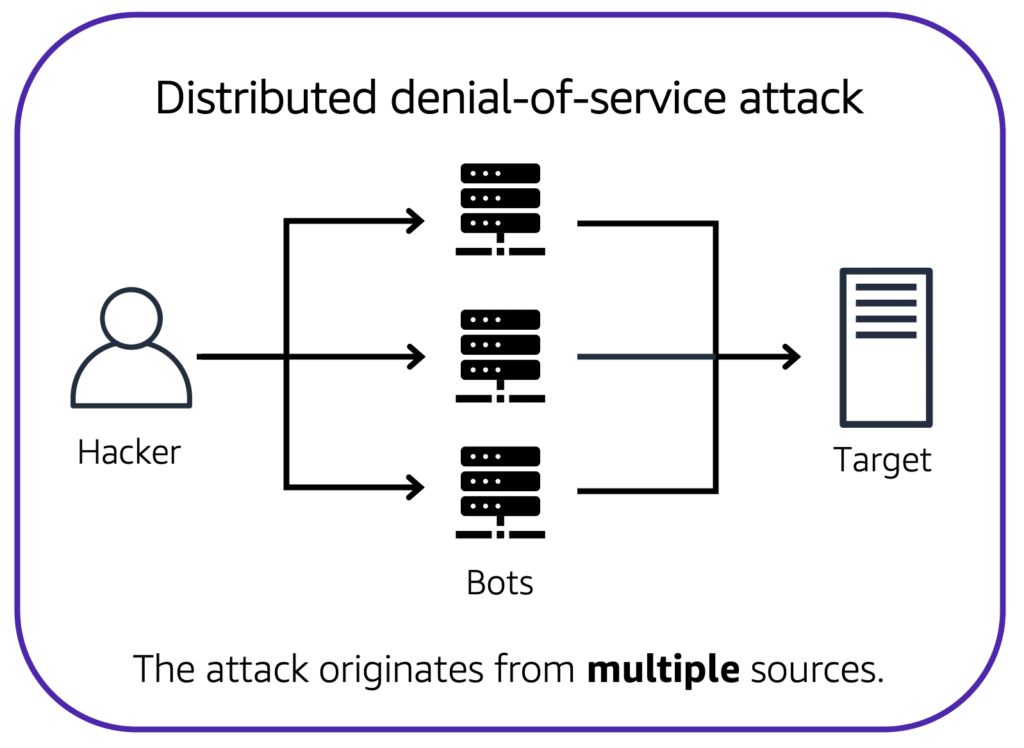Denial-of-service attacks
Customers can call the coffee shop to place their orders. After answering each call, a cashier takes the order and gives it to the barista.
However, suppose that a prankster is calling in multiple times to place orders but is never picking up their drinks. This causes the cashier to be unavailable to take other customers’ calls. The coffee shop can attempt to stop the false requests by blocking the phone number that the prankster is using.
In this scenario, the prankster’s actions are similar to a denial-of-service attack.
A denial-of-service (DoS) attack is a deliberate attempt to make a website or application unavailable to users.

For example, an attacker might flood a website or application with excessive network traffic until the targeted website or application becomes overloaded and is no longer able to respond. If the website or application becomes unavailable, this denies service to users who are trying to make legitimate requests.
Distributed denial-of-service attacks
Now, suppose that the prankster has enlisted the help of friends.
The prankster and their friends repeatedly call the coffee shop with requests to place orders, even though they do not intend to pick them up. These requests are coming in from different phone numbers, and it’s impossible for the coffee shop to block them all. Additionally, the influx of calls has made it increasingly difficult for customers to be able to get their calls through. This is similar to a distributed denial-of-service attack.

In a distributed denial-of-service (DDoS) attack, multiple sources are used to start an attack that aims to make a website or application unavailable. This can come from a group of attackers, or even a single attacker. The single attacker can use multiple infected computers (also known as “bots”) to send excessive traffic to a website or application.
To help minimize the effect of DoS and DDoS attacks on your applications, you can use AWS Shield.
AWS Shield
AWS Shield is a service that protects applications against DDoS attacks. AWS Shield provides two levels of protection: Standard and Advanced.
AWS Shield Standard automatically protects all AWS customers at no cost. It protects your AWS resources from the most common, frequently occurring types of DDoS attacks.
As network traffic comes into your applications, AWS Shield Standard uses a variety of analysis techniques to detect malicious traffic in real time and automatically mitigates it.
AWS Shield Advanced is a paid service that provides detailed attack diagnostics and the ability to detect and mitigate sophisticated DDoS attacks.
It also integrates with other services such as Amazon CloudFront, Amazon Route 53, and Elastic Load Balancing. Additionally, you can integrate AWS Shield with AWS WAF by writing custom rules to mitigate complex DDoS attacks.